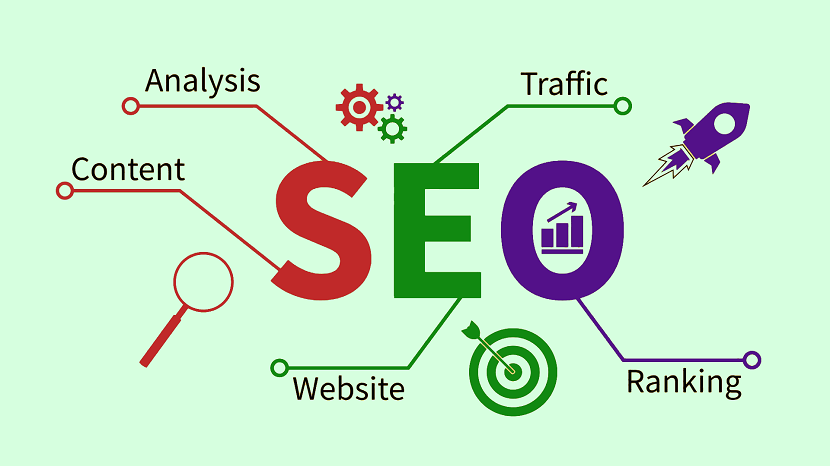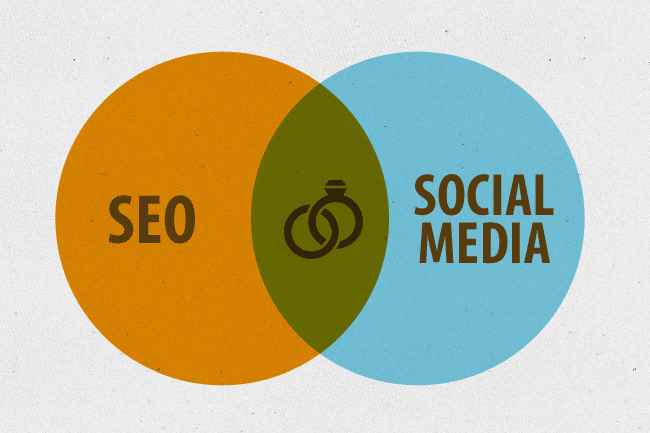What is a link?
A link is a web address that directs you to a different webpage of the same or different domain. In Websites, they are used in the form of a Hyperlink. The link that is hidden in hypertext is called a Hyperlink.
When we refer to links in terms of SEO, we are referring to two types of links, i.e., Internal and external.
By the end of this article, you will learn how to utilize internal and external links to help your content appear on the top of Google Search Results.
What is Internal linking?
The task of linking one page to another within your website is called Internal Linking. When Google sends out crawlers, they scan your site content and visit the links mentioned in your content to capture every part of your page for indexing.
So whenever you write an article, plan it out so that you write content relevant to another page to interlink it.
Make sure it creates a flow with your current article so that it doesn’t look stuffed and end up confusing the reader.
Different types of Internal links:
There are six types of Internal links used for various purposes.
Navigational link:
Assuming that your users are not always going to land on your homepage; Placing navigational links on all the pages of your site can help Google and users navigate throughout.
A Menubar is a commonly used navigation link that includes almost all the pages categorized appropriately.
Contextual Link:
Links that are directed to other relevant pages are called Contextual Links. Contextual links reduce the bounce rate for your site by making the user stay longer. They also help bring higher conversions.
CTAs:
Call-to-Action internal links are used to prompt your visitors to take action. CTAs are used to make the user land on your conversion page.
If you are selling a product or a service, you can write a blog about it and add a CTA at the end that directs your potential customer to the offer page.
Recommended Posts:
Place a ‘Recommended Posts’ section as a sidebar to your blog. The idea is to ensure the user stays on your site longer by giving them more content to read.
Place your ‘high authority and ‘almost ranking’ pages on this sidebar, and you can gradually notice them getting more clicks.
Images:
Image internal links are considered the most underrated link-building strategy. Even SEO experts sometimes fail to understand the value an image link can bring to your site’s SEO.
If you are using an infographic image on an article, link it to a relevant post on your website that explains a bit about the concept in the image.
Remember, Google takes note of the content of an image as well.
Footer links:
Although not all the pages can be included in our Footer, Footer links are similar to navigational links. While crawling, Google checks whether the footer links are placed to help users navigate your site. Make sure that you don’t add an excessive amount of links.
How to do Internal Linking?
Sometimes, Google may find one of your pages less valuable, and your high-value page misses the chance of getting ranked. To make sure that Google ranks your high-value content page, you must link them to its relevant pages.
Your high-value pages have the most important and rich content that you wish to rank on the top of SERPs.
Let’s say you are writing a Pillar content page about ‘Cycling’ written in long form. You can write 3-5 articles relevant to your pillar content page, i.e. ‘Top 5 Cycles in India,” Health Benefits of Cycling,’ Cycling tips for Beginners.’
All the three topics mentioned can be internally linked to your pillar content. It will help Google understand that you have high-value content that needs to be ranked.
According to Databox, Pillar content pages are considered ideal for backlink acquisition.
Why is Internal Linking important for SEO?
Improves User experience
One of the top ranking factors of SEO is user signals. When a user visits your site, they expect to gain in-depth knowledge on a topic and clicks on every possible link to absorb as much information as possible.
If you offer them that kind of experience, it’s a sure sign to Google that your site is rankable.
Established Site hierarchy
Internal Linking helps create a site structure based on the information hierarchy of your site. The content of your page is categorized in different buckets so that users can easily navigate your site.
The more at ease they feel, the more users are willing to explore every content on your page.
Shared Link juice
Link Juice is the term used when the value of one page is passed to another via internal linking. So when your high-ranking page is linked to some medium-to-low ranking pages within your site, the value and authority of these pages will gradually increase.
Increases Crawlability
Crawlers are meant to capture your page content and scan for links to index and rank them.
By internal linking all your pages, you are giving the crawlers more opportunities to discover and index all your pages, increasing the chances of showing in search results.
SEO Best Practices for Internal Linking
Internal linking is a significant SEO ranking factor that most marketers and SEO experts fail to invest their time in.
It helps search engines and users find and understand your content better. They transfer SEO value across all the pages of your site.
Now that the importance of Internal linking is established, let’s dive into some of the best practices of Internal Linking for improving your Site’s SEO.
Keyword Rich Anchor Text
Anchor Texts are the hypertexts you link to a page within your website, i.e., your target page. A keyword-rich anchor text is essential to provide context to users and Google. Users should know what type of information you are leading them to.
Optimize your Anchor text by using low-density keywords and phrases that would make the users click the link.
Structural Internal Linking
Internal Linking, when done in a structured format, creates a hierarchical model for all your pages on your website.
It benefits your site’s SEO with increased user engagement and better rankings. Users and Crawlers can navigate your content easily.
Pre-plan Internal Linking
Before you start writing content on your website, plan your internal links first.
Which page content would be relevant to the current page?
Does this page get enough traffic?
How and where to add them without disrupting the content flow?
These are the questions you should ask yourself when planning to write content for interlinking.
You can also opt for professional SEO services to help you with building internal linking strategy and content calendar.
Link Low-traffic pages to High-traffic pages
Direct your high-ranking links to the child pages, which don’t get enough traffic. This way, link juice, and authority are distributed equally among all the pages within your website.
Add Recommended blog links.
Add recommended posts at the bottom of each blog post or on the sidebar of your webpage. Utilize the space of your webpage by placing internal links to relevant blog posts and fresh ones so that the user has more content to explore.
Do not neglect Orphan pages.
Crawlers and users cannot reach Orphan pages as they do not have any links. While auditing, check for pages with zero internal links.
Fix them by placing links if you find them relevant and link-worthy. If the content is not relevant, take it down.
What is External Linking?
External linking or Outbound linking is a hyperlink that navigates users to a page or a blog post published in a different domain.
It may sound like you are driving your users away from your site.
But that’s not the intention.
When you link your content to another website, it will increase your SEO score. External linking increases credibility and authority among your users, indicating that you are willing to give them accurate and valuable information and understand their needs.
By giving your users an ultimate reading experience, they keep coming back to you thinking you are the subject matter expert on the topic they are looking for.
Make sure that you are linking to the right pages. Think about how this page brings value to your content.
From the example mentioned about cycling, you can link the page to a website that gives you statistics on ‘how many cyclists ride daily?’ or to a public health blog that provides you the ‘health benefits of cycling in detail.’
Linking to sites that provide expert opinions can enhance your reader’s credibility towards your content.
SEO Best Practices for External Linking
High Authority Pages
If you want your users to rely on your content, you should probably consider checking the authority of the site you are linking to.
If the external page is not content-rich or ends up being irrelevant or spammy, that reflects on your SEO ranking.
You might even get penalized for giving a link to the spammy page. Follow this step to boost your page authority, gain more visitors, and end up on top SERPs.
Relevant Pages
Make sure that you are always linked to relevant content pages. If the user finds it irrelevant, that’s the last time the user will be visiting your site. Having a Keyword-rich Anchor text can give users a better understanding of how relevant the directed page would be.
Open in new tab
When you add an external link, make sure that you select the ‘Open in New Tab’ option. This step lets your site stay open, and the user can return and read the rest of the content whenever instead of moving on to a different website.
Monitor for Broken links
With the help of Ahrefs’ Broken Link Checker tool, you can monitor if any of your external links are not found by the user. It happens if the owner of the external linking site has taken down the page.
Broken links can break users’ trust and sends wrong user signals to Google making it impossible for you to rank.
Instead, replace those links with valuable ones and monitor them occasionally, its comes under technical SEO audit
Conclusion
By effectively following the best practices of internal and External linking, you can quickly improve the SEO score of your site.
Internal and External linking deserve more priority and time when building a solid SEO strategy. Ensure that you give importance to providing relevant and authentic content.
Google algorithm considers the most hyperlinked pages as highly popular.
You may be tempted to fill your blog with Internal and External links to get more clicks. But not all links can bring value to your content.
Hence, you mustn’t overdo it. Remember that Quantity always wins over Quality.








